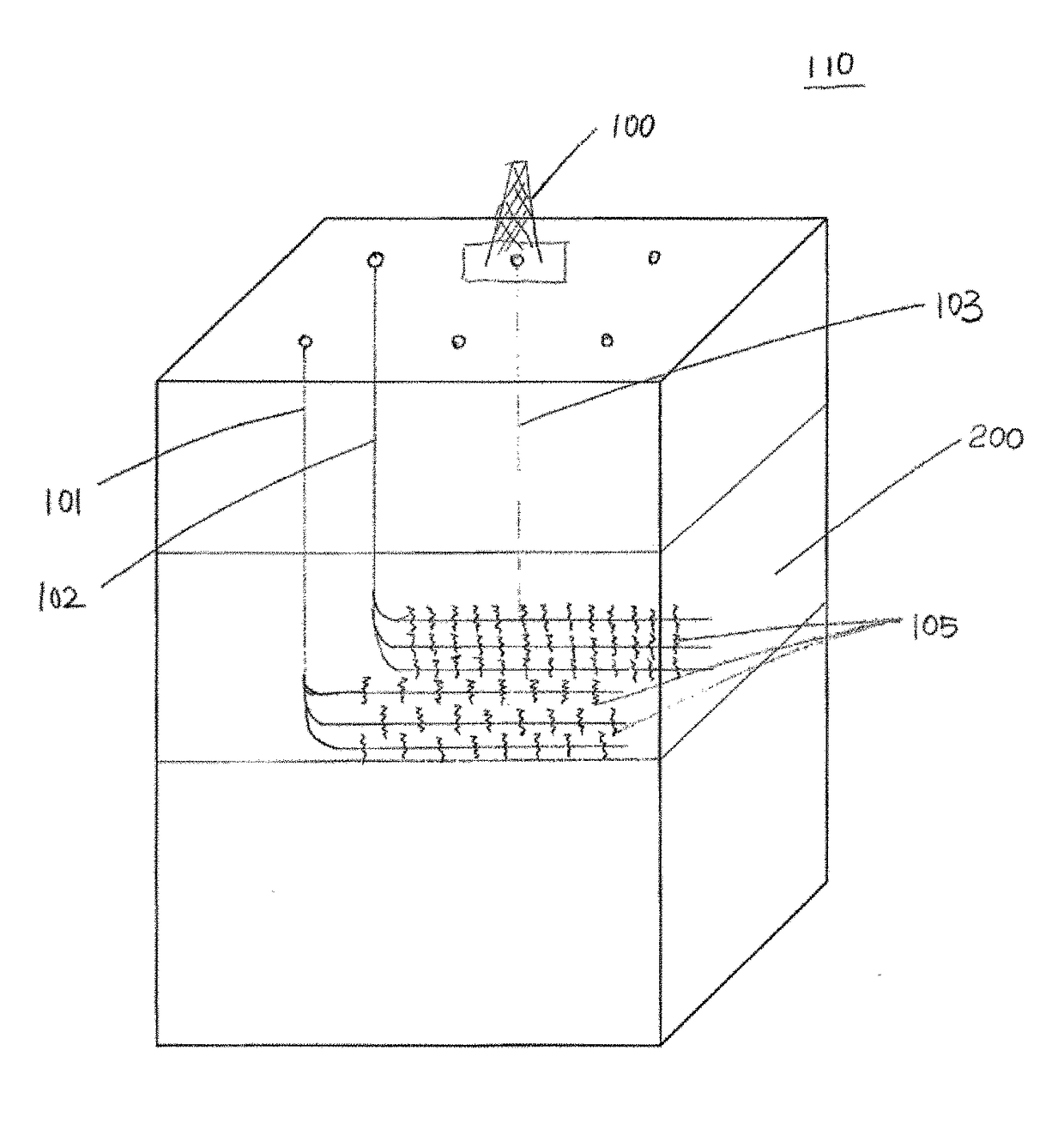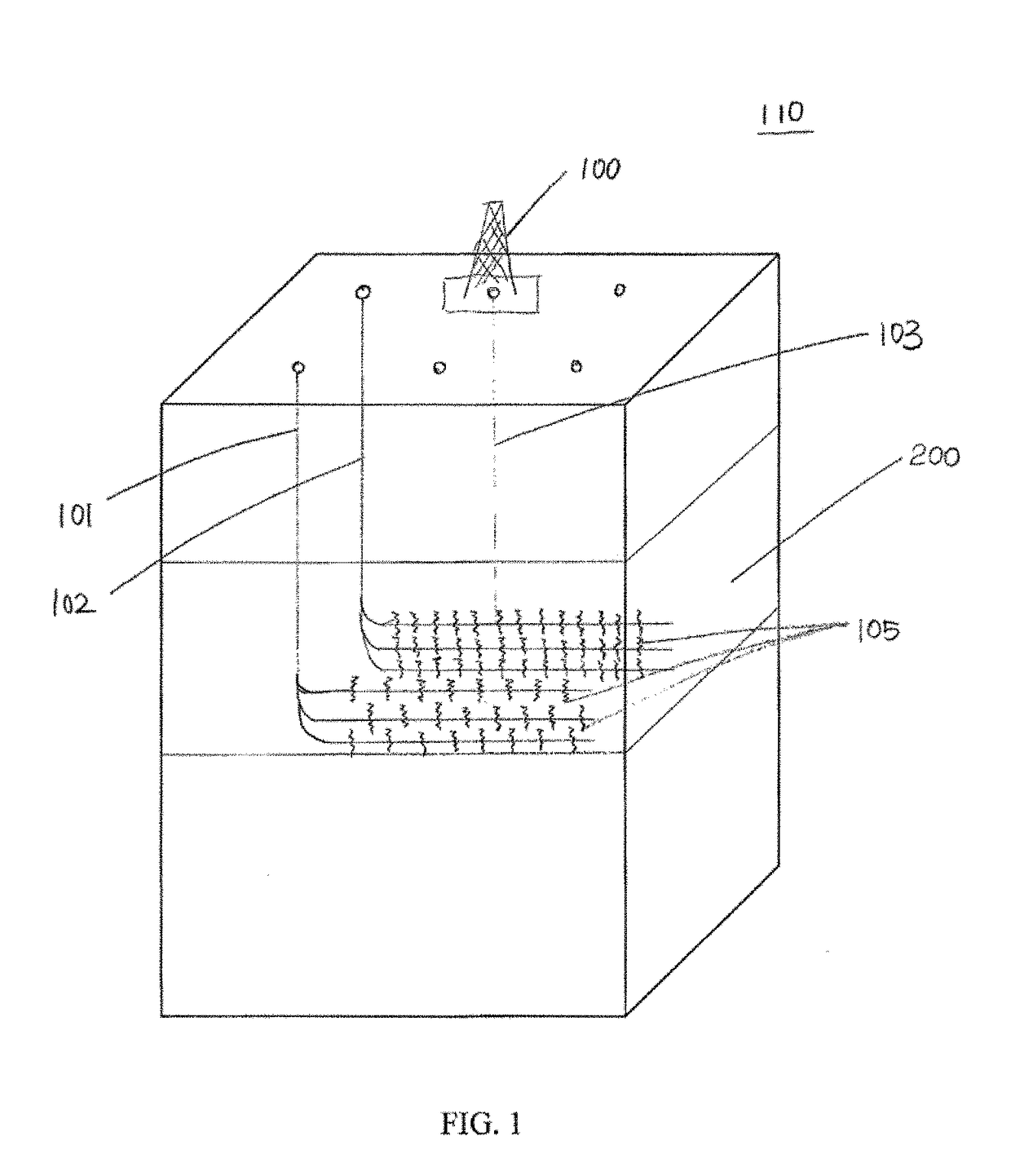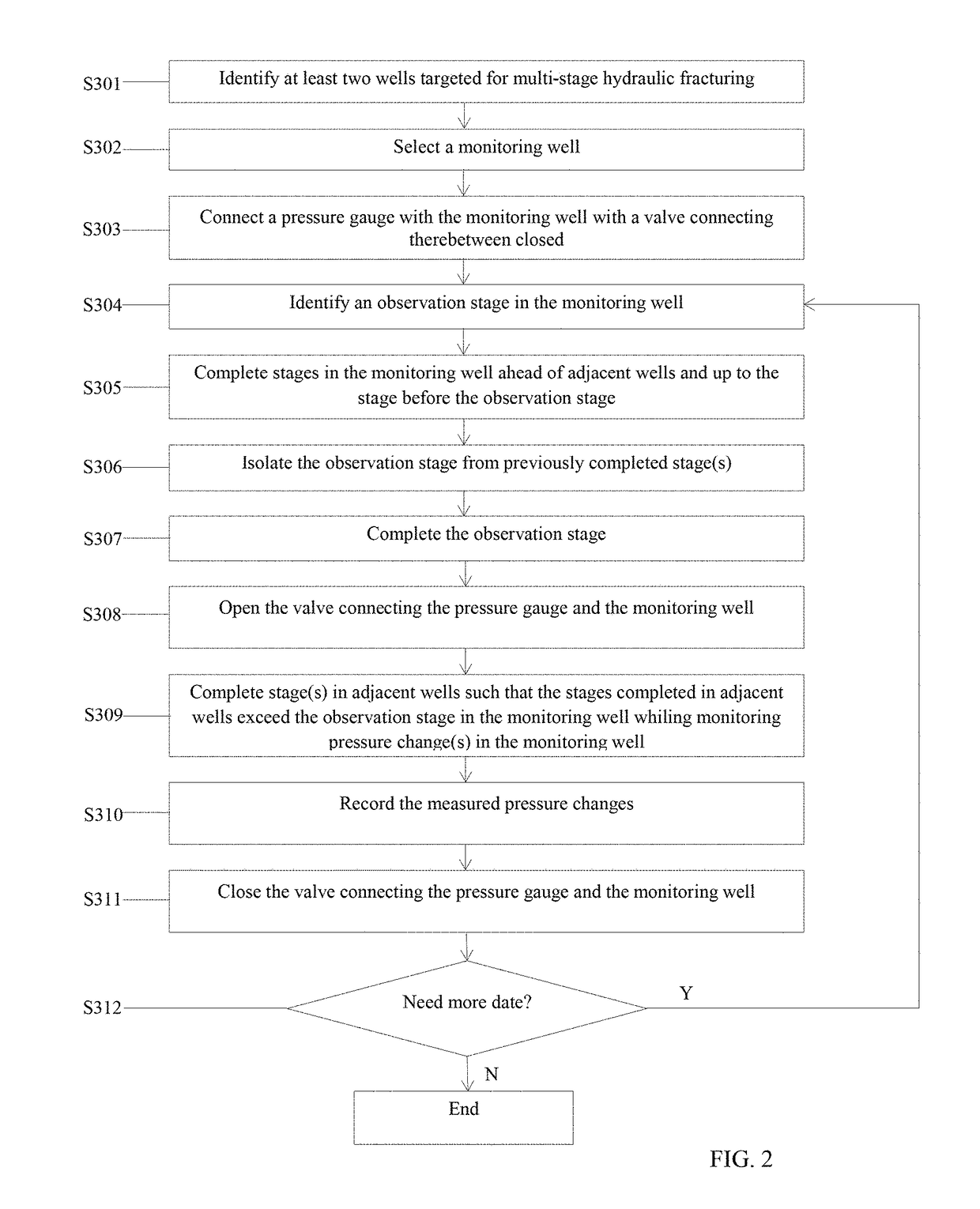Method of geometric evaluation of hydraulic fractures by using pressure changes
a hydraulic fracture and pressure change technology, applied in the field of completion/reservoir technology, can solve the problems of low cost, inability to map hydraulic fractures, and inability to commercialize, and achieve the effect of reducing cost and increasing the certainty of results
- Summary
- Abstract
- Description
- Claims
- Application Information
AI Technical Summary
Benefits of technology
Problems solved by technology
Method used
Image
Examples
Embodiment Construction
[0021]The present invention will now be described in detail with reference to the accompanying drawings, wherein the same reference numerals will be used to identify the same or similar elements throughout the several views. It should be noted that the drawings should be viewed in the direction of orientation of the reference numerals.
[0022]The present invention is directed to evaluate hydraulic fracture geometry by measuring pressure changes in an observation well stage while hydraulic fractures are created in adjacent well(s) for a multi-well pad, and performing an analysis which couples a solid mechanics equation and a pressure diffusion equation.
[0023]FIG. 1 shows an exemplary diagram of a drilling operation on a multi-well pad. One of ordinary skill in the art will appreciate that the drilling operation shown in FIG. 1 is provided for exemplary purposes only, and accordingly should not be construed as limiting the scope of the present invention. For example, the number of group...
PUM
 Login to View More
Login to View More Abstract
Description
Claims
Application Information
 Login to View More
Login to View More - R&D
- Intellectual Property
- Life Sciences
- Materials
- Tech Scout
- Unparalleled Data Quality
- Higher Quality Content
- 60% Fewer Hallucinations
Browse by: Latest US Patents, China's latest patents, Technical Efficacy Thesaurus, Application Domain, Technology Topic, Popular Technical Reports.
© 2025 PatSnap. All rights reserved.Legal|Privacy policy|Modern Slavery Act Transparency Statement|Sitemap|About US| Contact US: help@patsnap.com



